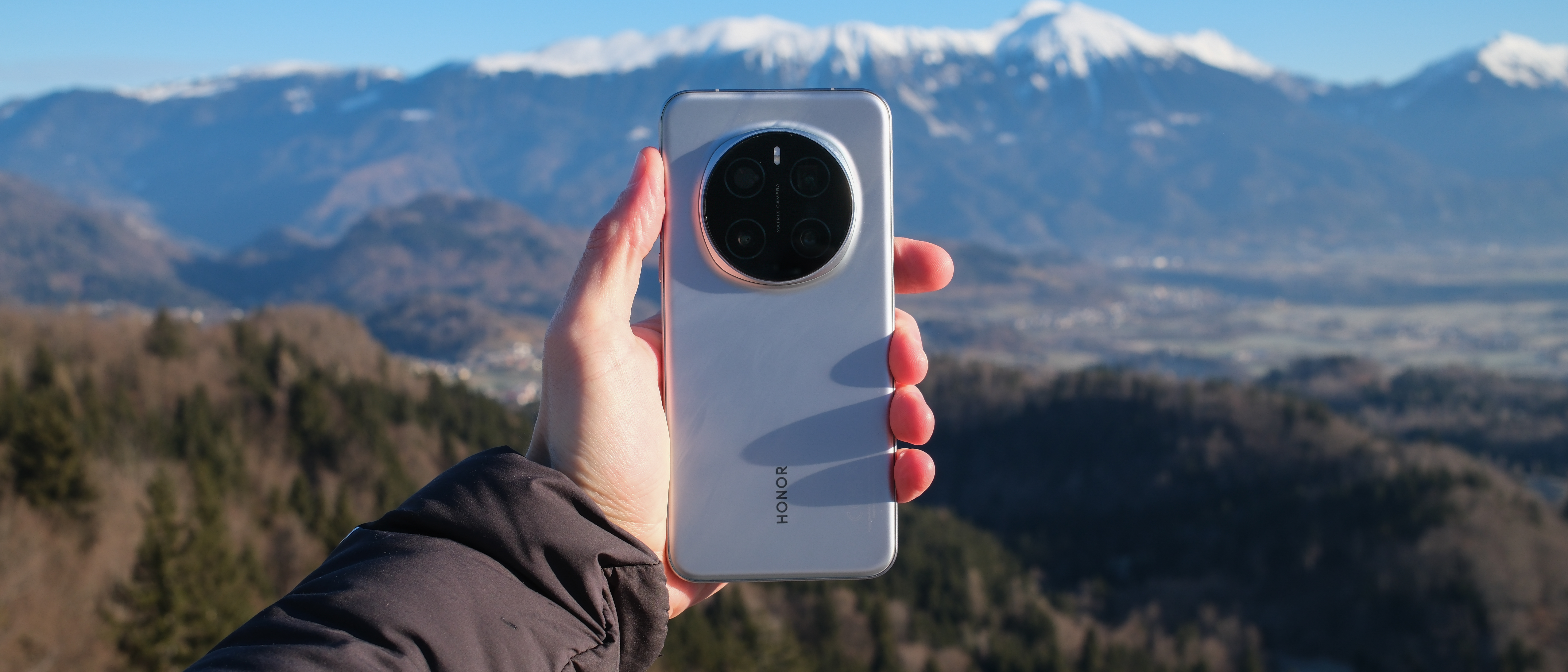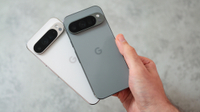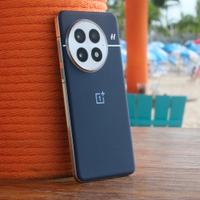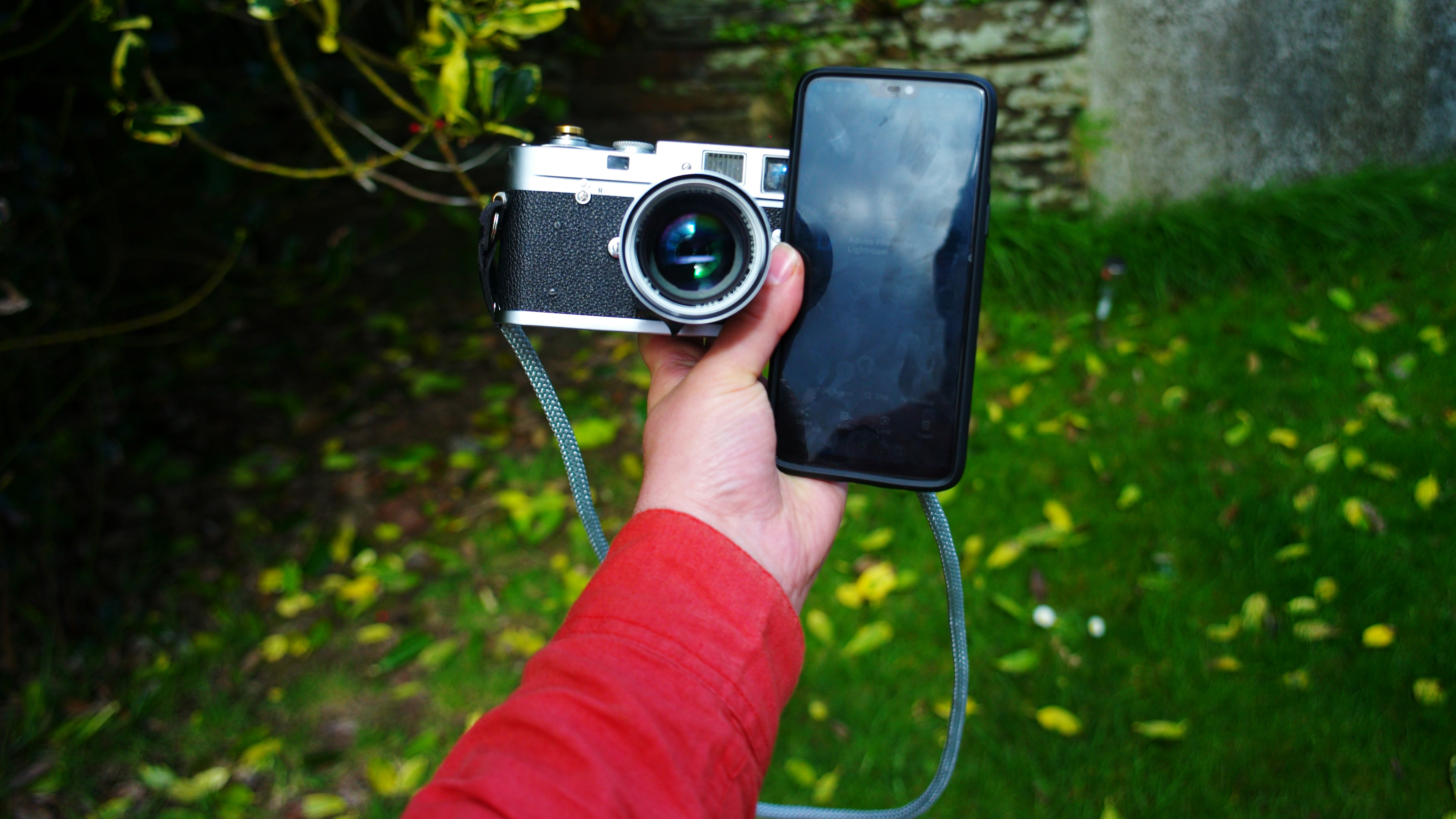Digital Camera World Verdict
On first impressions, the Honor Magic 7 Pro looks and feels every bit the flagship its price suggests. The build quality is fantastic with an impressive ruggedness. The squircle camera model and the lunar grey finish make for one good-looking phone. Around the front, the screen is very nice, sharp with great colors. The camera hardware also ticks all the right boxes, with the 200MP 1/1.4” telephoto sensor being the standout. But it’s in the camera software where the Magic7 Pro sets itself apart, with the phone leaning heavily into AI – although these look to have mixed success. Features like auto capture and HD super burst are winners, but the headline AI feature – AI Superzoom – might not be ready for primetime.
Pros
- +
Great design, especially in Lunar Grey
- +
Sharp and colorful screen
- +
High-res triple cameras perform well
- +
Some interesting AI camera features
Cons
- -
AI Superzoom results look very fake
- -
Photo quality is a little behind leaders
Why you can trust Digital Camera World
It's a busy month for new phones. Hot off the heels of the well-received OnePlus 13, and just before juggernauts Samsung launch its S25 range, Honor has managed to squeeze in with its flagship for 2025 – the Honor Magic 7 Pro.
While there has been a version of the Honor Magic 7 Pro available in China for a few months now, the "international" version has just been launched in the UK and Europe, although like previous incarnations of Honor phones, international does not include North America or Australia.
However, if you are really keen to try out the device, then you might be able to import this version via Amazon or eBay – just be cautious to check if it works on the right network bands in your area.
Like last year's Magic6 Pro, the Magic 7 Pro is not short of some pretty appetizing camera hardware – although this year Honor is looking to software and AI to improve the camera experience and set the Magic 7 apart from increasingly tight competition. After a few weeks of playing with the phone, does the Honor Magic 7 Pro do enough to join the list of the best Android phones for photography? Lets find out...

Honor Magic 7 Pro: Specifications
| Price | £1,099 |
| Screen | 6.8 inches, 1280 x 2800 |
| CPU | Snapdragon 8 Elite |
| RAM / Storage | 12GB+512GB |
| Wide Main Camera | 50MP Wide Main Camera (f/1.4-f/2.0, OIS) |
| Ultra Wide Camera | 50MP (f/2.0) |
| Telephoto Camera | 200MP (f/2.6, 3x Optical Zoom, 100x Digital Zoom, OIS) |
| Front Camera | 50MP (f/2.0) + 3D Depth Camera |
| Video | 4K 60fps (3840×2160) |
| Battery | 5270 mAh |
| Operating System | MagicOS 9.0 (Based on Android 15) |
| Size (HWD) | 162.7 x 77.1 x 8.8 mm |
| Weight | Approx. 223 g |
Honor Magic 7 Pro: Price
The Honor Magic 7 Pro has launched at £1,099, which puts it pretty much square against the competition. It costs the same as the Google Pixel 9 Pro XL (my top-rated camera phone) but the Pixel has a paltry 128GB of storage for that price. And the Honor is £100 more than the 16GB+512GB version of the fantastic OnePlus 13.
Although there are nearly always deals to be had on all these handsets including some current preorder and early bird offers from Honor on the Magic 7 Pro.
Honor Magic 7 Pro: Design & Handling
I really like the Honor Magic 7 Pro's style – it looks and feels like a premium flagship. I have the Lunar Grey option which is inspired by the surface of the moon, although I think the finish looks a little more like when you dissolve a bath bomb, but anyway – it looks great. If you aren’t sold on the silver/grey, then there is also a black finish which is more subtle. The back of the phone is only broken up by the camera bump which tapers off the round camera island into a squircle shape and does a good job of making the bump look less tall than it is.
After last year's curvier model, this time around the overall shape is more boxy, with flat sides and only very slight tapered curves on the edges of the screen and back cover which makes the phone just a little more comfortable to hold. As usual, there is the volume rocker and power button located on the right-hand side of the frame which can also do double duty to quickly open the camera and snap images without having to touch the screen.
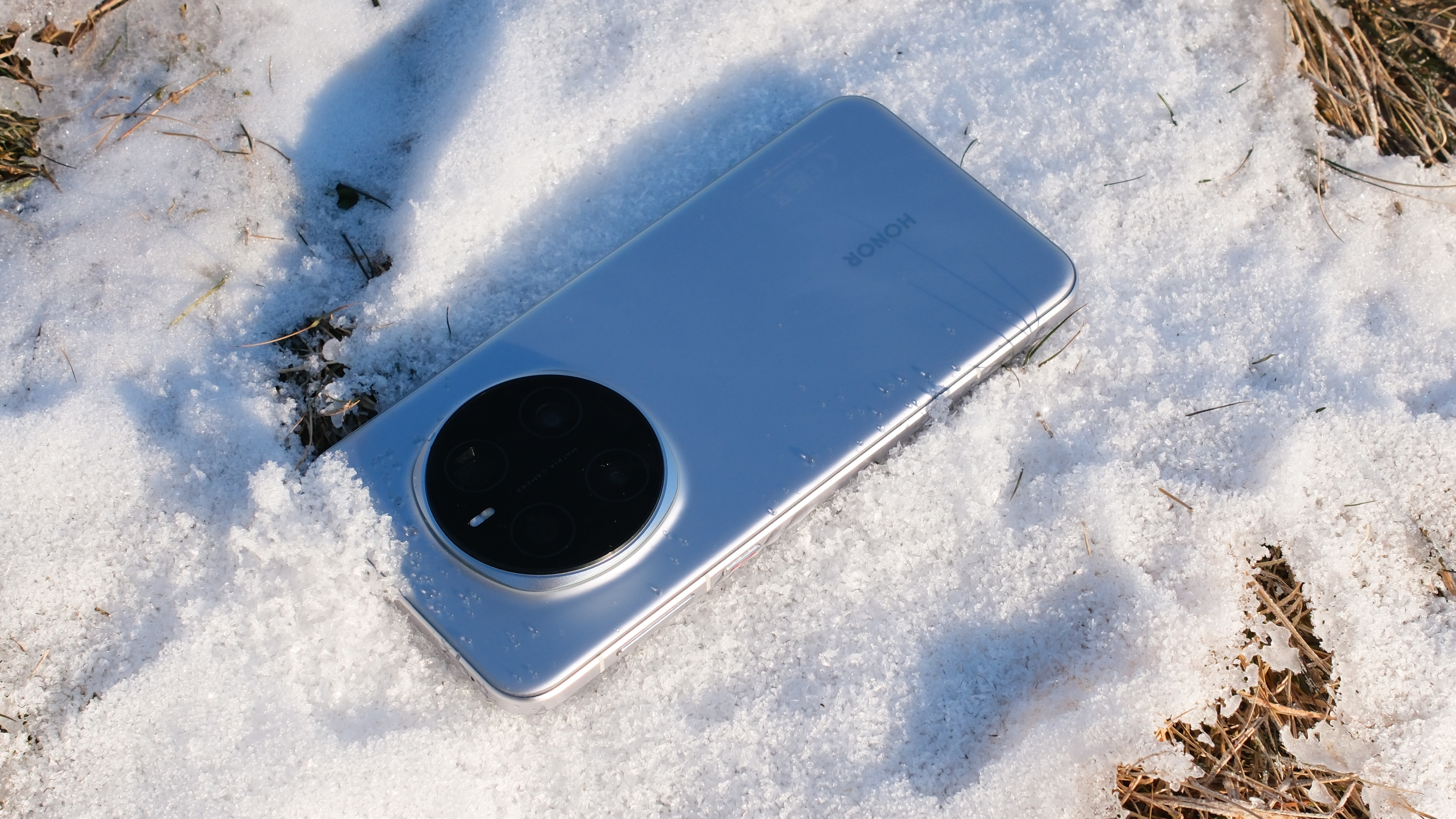
The Magic 7 is nice and rugged if you are an outdoorsy adventurer, with an IP68/69 rating the phone can survive freezing temperatures, submersion in fresh water, as well as jets of water, although steer well clear of the ocean. The phone is also fitted with Honor's NanoCrystal Shield glass which is allegedly ten times more drop-resistant than unnamed “traditional” screen glass. I haven’t extensively tested this, but using the phone with cold hands and thick gloves, I have (unintentionally) dropped the phone a couple of times onto hard earth, and into snow, but it is still looking new and working as it should.
The 6.8-inch screen packs 2800x1280 pixels, which isn't the sharpest around, but makes for a clear display, and at a huge 5000 nits of peak brightness for HDR content and 1600 nit max brightness, the screen can get plenty bright outdoors. And like most phones in the past year, the screen on the Magic 7 has thankfully lost its curved sides which makes viewing photo and video content that much friendlier.
Colors are very nice in the vivid color mode, they look natural with just the right amount of pop, but if you are one of those people who like a very saturated screen then there are limited options to boost them – although you can desaturate further. You can also play around with the white balance if you want to fine-tune it a little for editing, although I found the default setting to be a good balance.
Honor has also put a lot of work into the screen’s health features, with an AI eye care that adjusts the screen as you move around in changing light situations which should help relieve eye strain. When you spend the amount of time staring at screens as I do, I will welcome any advancements to save my eyesight.
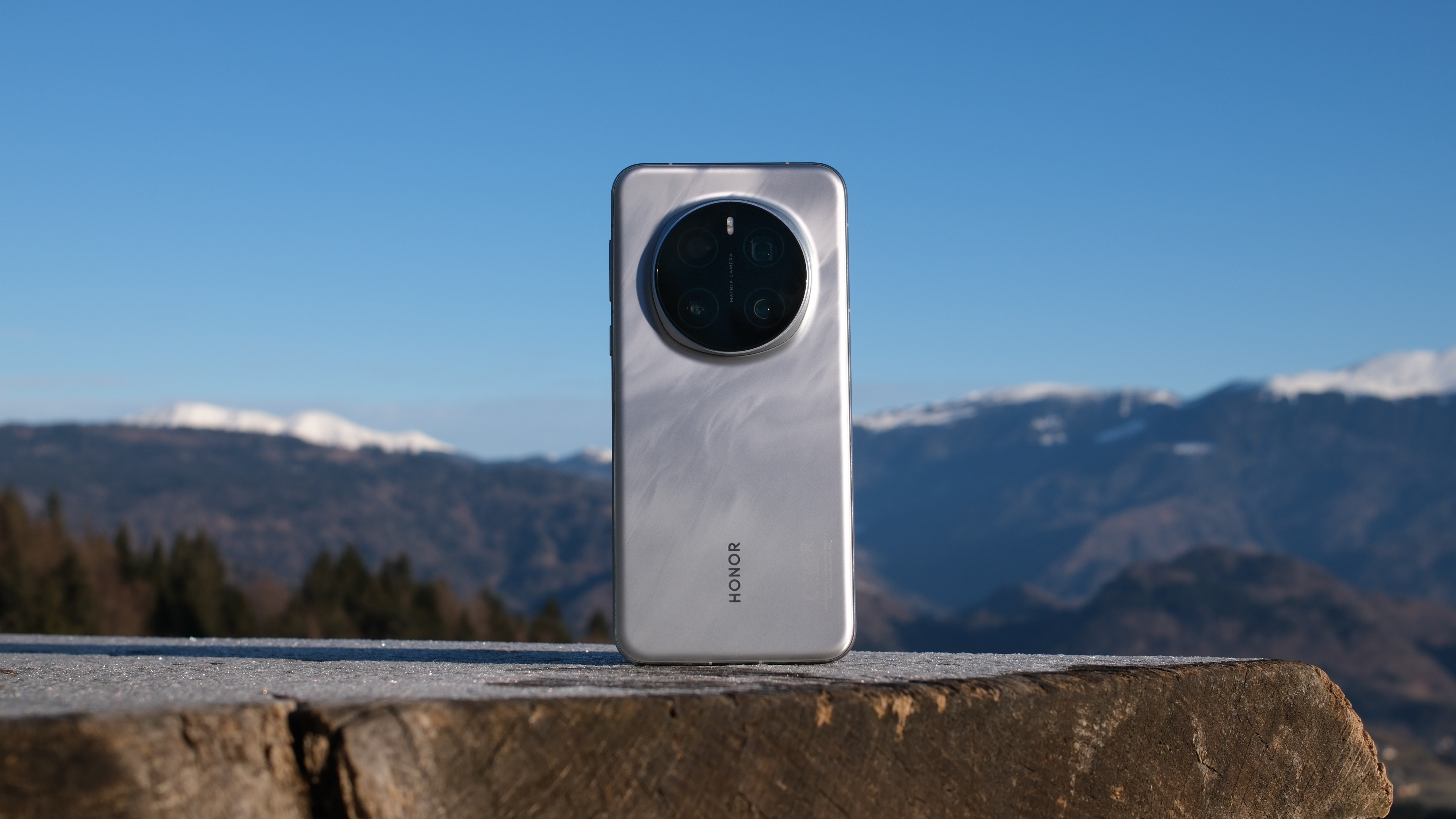
Honor Magic 7 Pro: Camera Performance
When last year's Honor Magic6 Pro had such a strong trio of sensors, there wasn't much that was crying out for a hardware upgrade this time around. The Magic 7 Pro keeps the same 50MP dual-aperture wide camera and 50MP ultra-wide camera, although it bumps the 2x 180MP sensor to a 3x 200MP one, complete with a new larger 1/1.4-inch size.
@digitalcameraworld ♬ original sound - DigitalCameraWorld
I appreciate the increase in telephoto focal length, but I really wish Honor went a little further as I just don't see enough difference between having a 2x pixel-bin crop from the wide sensor to a 3x telephoto – I personally think the 5x optical on the Pixel or iPhone makes more sense.
Saying that though, the telephoto camera shots have so far proved to be my favorites from all the rear cameras, with the 200MP sensor capturing a higher level of detail. All the cameras actually performed well in my testing, handling a lot of different lighting situations very well, and the images produced good colors, although colors, especially blue skies, were often very overexaggerated.
There are a few different photo modes to switch between, I found 'natural' to be the closest to my style, although still a little much, but there is also a more saturated vivid mode and an authentic mode that is meant to replicate a more film-like look (it doesn't).
Going back to photographing the sky for a second – and this might be subjective – I am not a fan of how the Magic 7 mimics aperture blades to render the sun (and other bright lights), turning them into fake-looking multi-pointed starbursts, I would love a little more control here to choose how I would like these to look.

Heavy image processing was also sometimes an issue, I noticed the wide and ultra-wide images especially can be a little muddy when it comes to finer details, maybe due to an overly aggressive noise reduction, or having too much digital sharpening applied making them look overly smooth and painterly. Both the Pixel 9 Pro and OnePlus 13 offered sharper final images in my testing, and I personally prefer the way those phone's images look.
These are all just minor irks with the camera, but with cameras on phones so close nowadays, it comes down to these minor differences.











But the big new telephoto feature on the Magic7 Pro is the new AI Superzoom which kicks in after going past 30x zoom. The idea is simple – it takes your image and uses AI to improve the quality by tracing lines and details in the photo and enhancing them. However, the reality is something slightly different – and the AI proved to be too heavy of a touch.
While it is very technically impressive that in a matter of seconds, you can go from one of the images on the left to the one on the right (below), I am not sure how much, in its current form, I would ever use this as the results look just too AI-generated with that uncanny lack of believable textures.
The AI has a tendency to be a bit too imaginative when deciding what was in my photos, with it replacing anything it deemed too complicated to improve with imagined objects, patterns, or symbols. In the examples below look carefully at the clock, the roofs, the plants on the cliff, and the flag to see this at work.
The AI processing is also cloud-based and relies on a steady internet connection to work – and I did find it irritating that the AI would turn off when I lost my connection, but not turn itself back on limiting me to 10x zoom until I dug back into the settings.
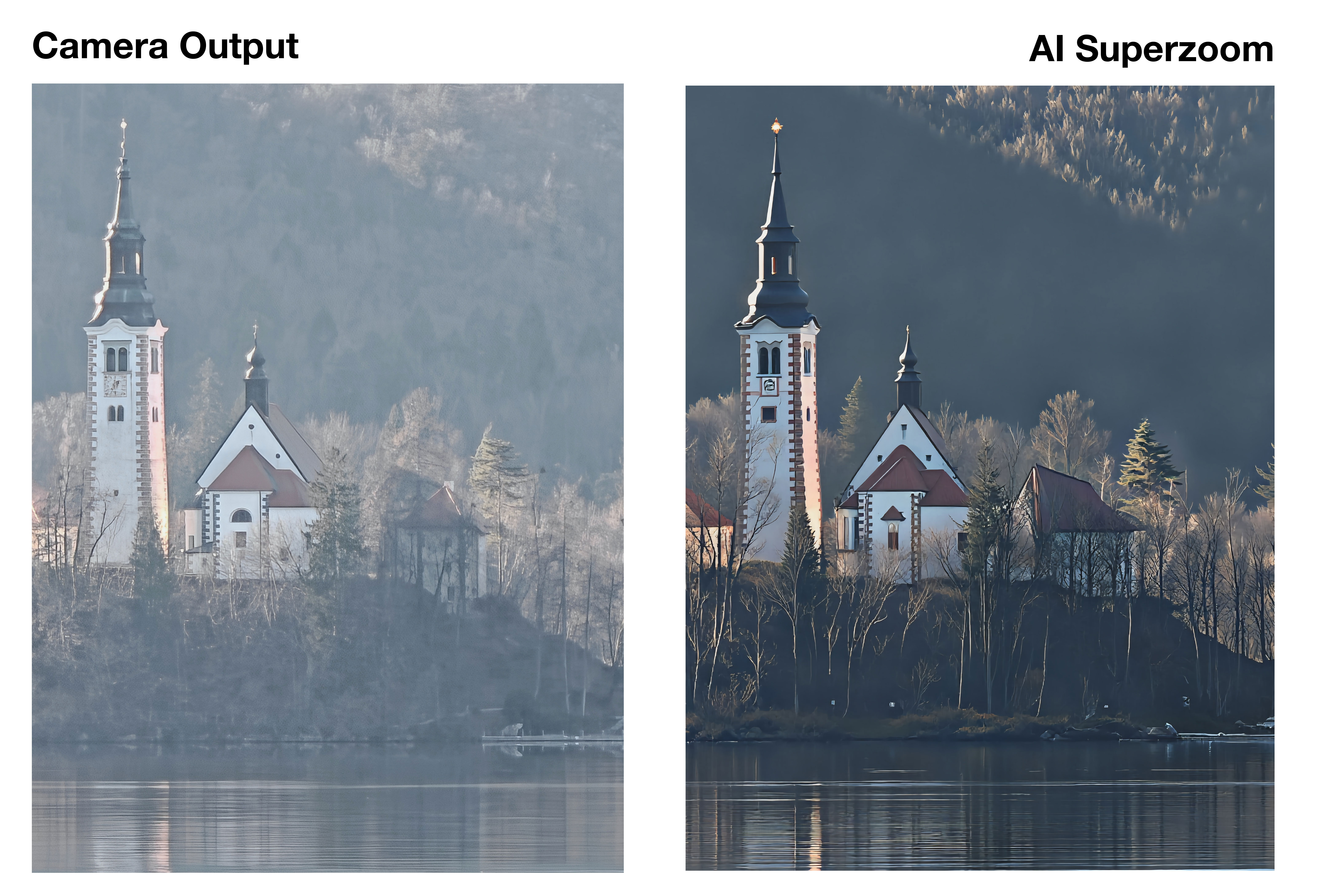
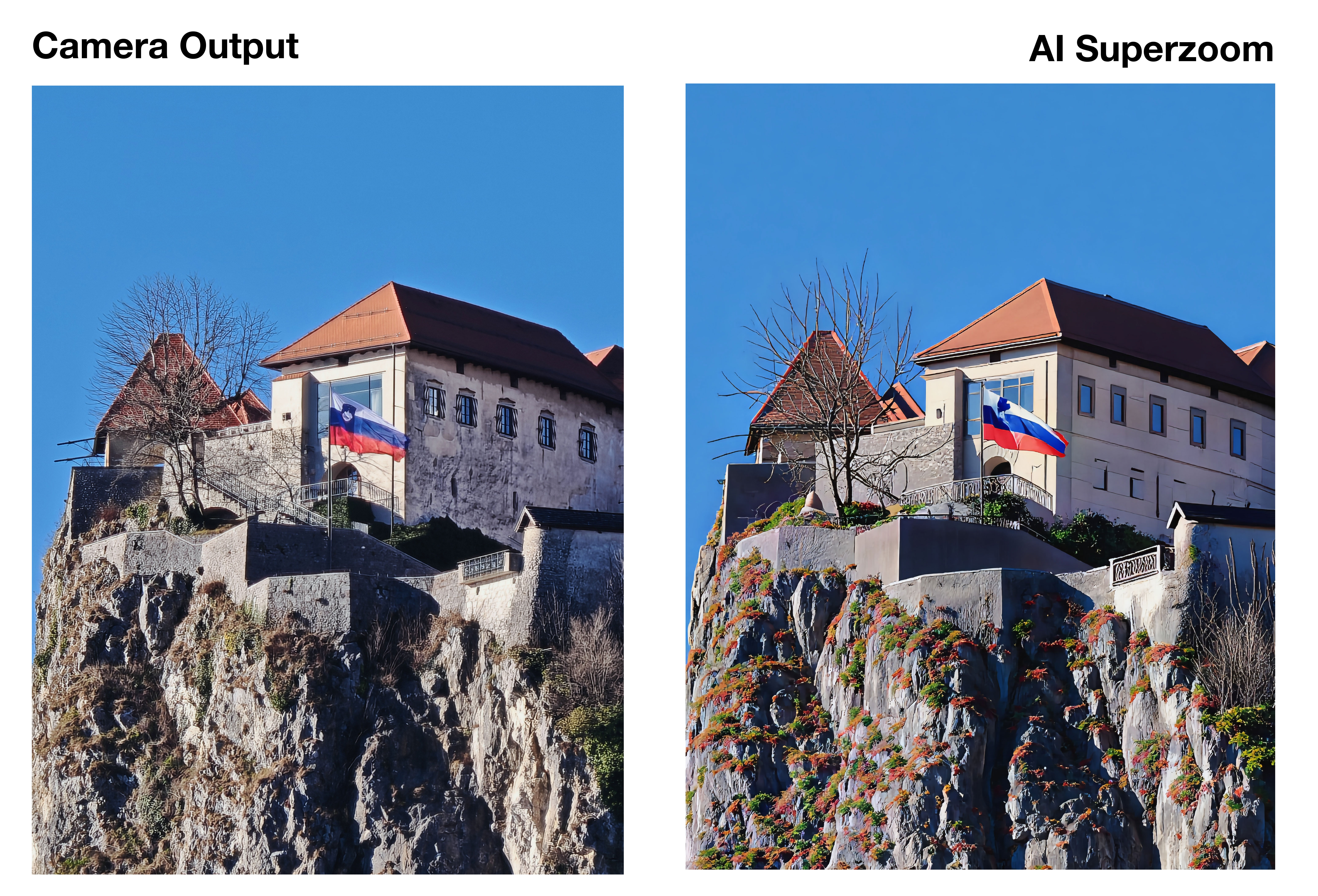
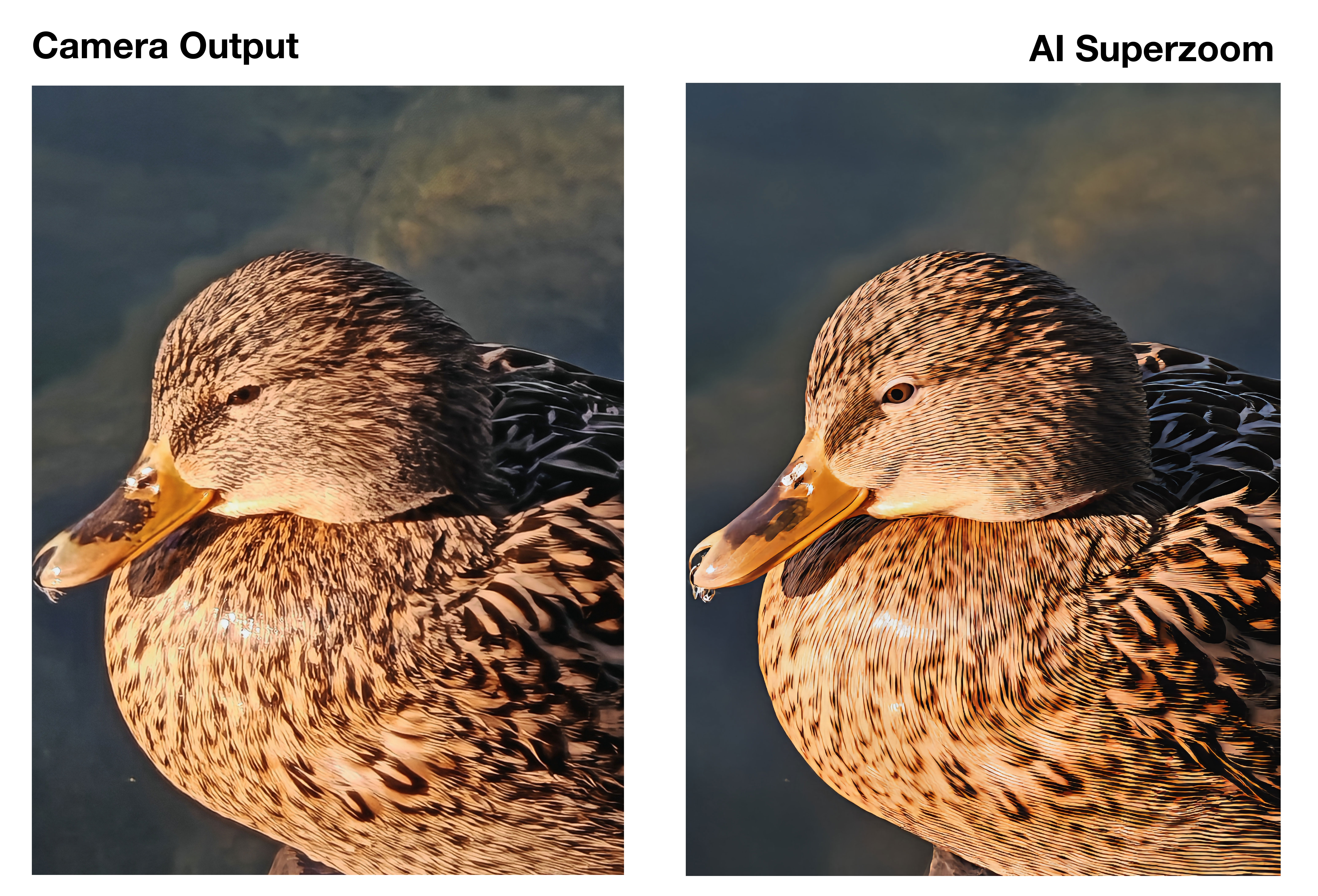
Thankfully though the other AI features of the camera system fare much better. The AI auto-capture feature is my particular favorite – using AI the camera can not only start capturing a burst of photos when it notices movement, but it can pull the shot it thinks is best from that burst for you. I tried some sledding and jumping shots with auto-capture and somehow every time it seemed to pull a picture right in the heat of the action.
If you don't want to rely on AI, you can manually capture a burst shot of up to 10 frames per second in the new HD Super Burst mode. These are saved in a stack in the photos app in full resolution, and you can pick to save whichever your human discernment tells you is best.

Other AI features include an AI portrait enhancement which should improve clarity and bokeh in portraits – while I think this had some effect, it wasn't a dramatic enough difference compared to portraits without AI assistance to really rave about it.
The Magic7 also has Honor's Harcourt portrait modes that aim to replicate studio-like portraits inspired by famous Harcourt looks. I think this one is entirely down to personal tastes, but I don't love these and found them a little like a TikTok or Instagram filter.
Video from the Magic 7 Pro is decent, the footage is sharp with vibrant colors, and a good dynamic range, although it doesn't reach the top-performing iPhone's video – although few phones do. Video on the Magic7 Pro can be recorded in 4K up to 60p, and with vivid HDR.
But my biggest gripe with the video on the Magic 7 Pro was with its stabilization. It was a pretty extreme test, but I took a trip on a quadbike over some pretty rough terrain, and the EIS on the Magic7 actually makes me queasy watching the footage back with the amount of jello-like shake correction. The iPhone footage from the bike on the other hand – silky smooth.
But there is even more AI to be found in video. The Magic 7 Pro has a nice feature where it pulls some frames out of your video and saves them as photos, it's something you could do manually, but this is exactly what AI is most useful for – taking away some tedious tasks.
Honor Magic 7 Pro: Phone Performance
With the latest SnapDragon Elite chip, the Magic 7 Pro had no issues flying through everything I threw at it. Editing photos and video, and applying AI edits and effects didn't seem to trouble the phone, and I even managed several consecutive 30-second blasts of the new HD Super Burst mode without it slowing down – although I'll caveat this by saying I was shooting outside in sub-freezing temperatures.
The battery life is a monster. While not as big as some of the batteries in other recent rivals, the Magic 7 has a lot of juice in the tank and it kept going all day long. I had a full day of shooting content – both photos and video – as well as just the camera open for a lot of that time, and I still was going to bed with around a quarter of the battery left.

Finally moving on to MagicOS 9 – the operating system built on top of Android that powers the Magic 7. MagicOS is one of the more heavy-handed Android OSs, and while it does have some neat features of its own, I don't really like how much it diverges from stock Android. I think I would eventually get used to it, but if you swap between a few different phones, or are coming from a Pixel you might be a little lost at first.
But this latest version of MagicOS adds even more AI features with a very good dictation and translation tool, there is also an upcoming AI deep-fake detection that will work in video chats, although beyond a quick demo at an event I haven't had a chance to test this out.
The Magic 7 also adds Google's Gemini AI as the default assistant as well as Google's circle to search – although MagicOS also has its own version of this where you can use your knuckle to quickly select anything on your screen to visually search for it. Both work very well, although Honor's version wins out here by offering more direct links into recommended apps based on the search results.
Honor Magic 7 Pro: Verdict
From the moment you pick up the Honor Magic 7 Pro, it’s clear this is a device that means business. Everything about it screams flagship, from the solid, reassuring build quality to the sleek design – the squircle camera module on the back and the lunar grey finish look fantastic. Flip it around, and you’re greeted by a display that’s just as impressive – a sharp, vibrant screen with excellent color reproduction and brightness levels, and thankfully no curve to the screen.
When it comes to cameras, the Magic 7 Pro adds a standout new 200MP 1/1.4” telephoto sensor, although the other cameras remain the same as last years model. Image quality is good but not class-leading, with some heavy and inconsistent processing.
But the real story lies in the AI software. Honor has leaned heavily into AI to enhance the photography experience, but the results are a mixed bag. Some features, like auto capture and HD super burst, are genuinely impressive, offering reliable performance that feels intuitive and useful. However, the headline-grabbing AI Superzoom is less consistent. While it shows potential, the results don’t always live up to the marketing hype, and it may need further refinement to truly shine.
Overall, the Honor Magic 7 Pro is a strong contender in the flagship space, blending top-tier hardware with ambitious software. It’s a phone that looks fantastic and performs well, but its cameras and AI features might leave some users wanting just a bit more polish.
| Features | A proper flagship with a top processor, screen and cameras. | ★★★★★ |
| Design | Good looks paired with a rugged screen and an IP68/69 rating. | ★★★★★ |
| Performance | Cameras are decent but not class-leading. But speed and battery power are great. | ★★★★☆ |
| Value | Around the same price as similar models, but for cameras there is better value. | ★★★★☆ |
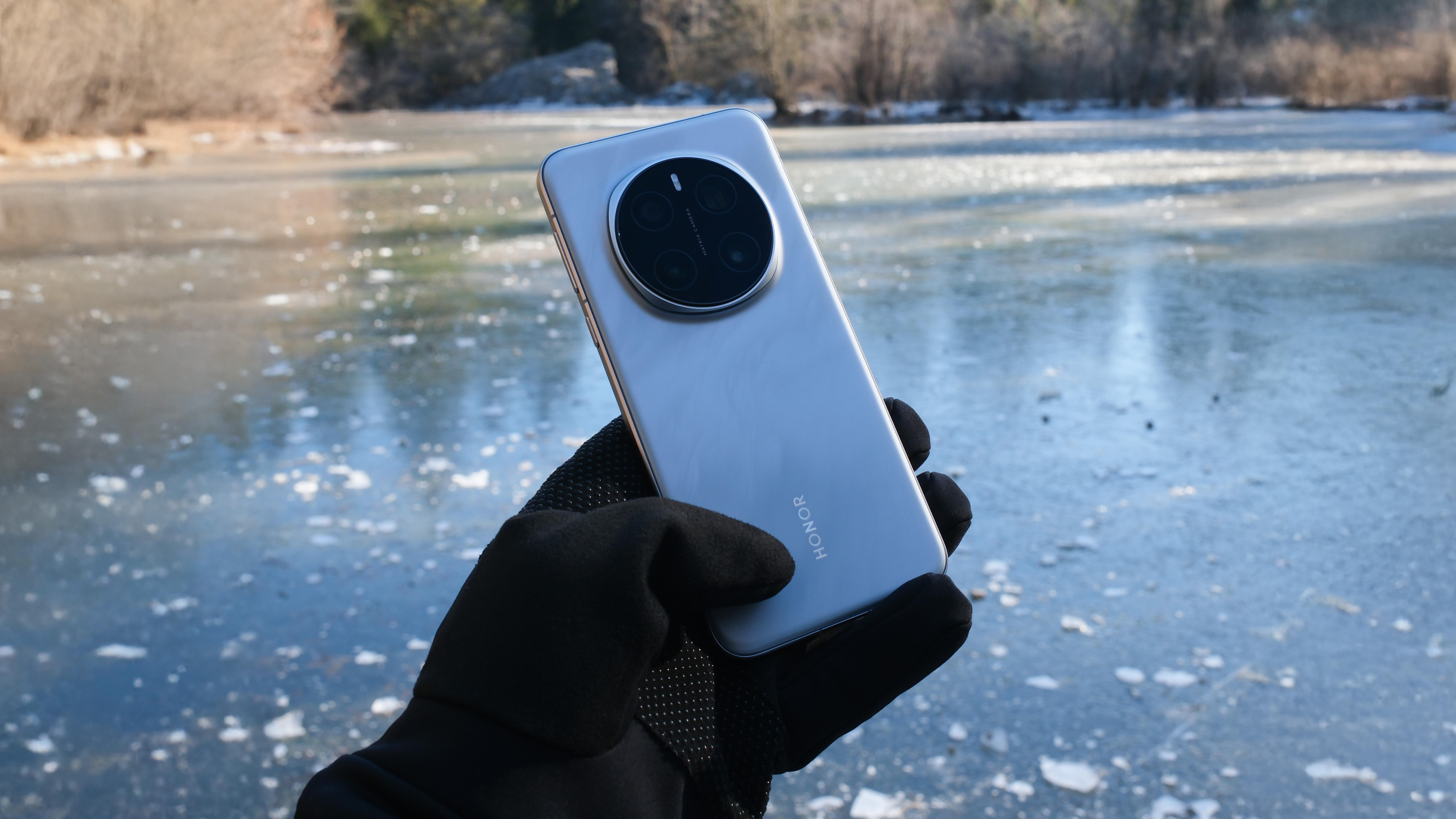
Alternatives
Google Pixel 9 Pro XL
The current gold standard for photography on a phone. The Pixel cameras take stunning shots, with a longer optical telephoto which is currently more useful than AI zoom. Read the full review...
OnePlus 13
OnePlus started the year on a high with not only its best phone yet but a real challenger for the best camera phone this year. Read the full review...

Gareth is a photographer based in London, working as a freelance photographer and videographer for the past several years, having the privilege to shoot for some household names. With work focusing on fashion, portrait and lifestyle content creation, he has developed a range of skills covering everything from editorial shoots to social media videos. Outside of work, he has a personal passion for travel and nature photography, with a devotion to sustainability and environmental causes.
